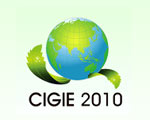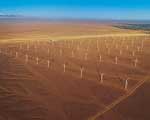Different strategies of 'green building' for sustainable future
By Rachel Stern (China Daily)
2009-06-01 08:23
|
|
SAN FRANCISCO: While the dangers of vehicle emissions are well known in both the United States and China, what isn't so well known is that there is a more potent pollution culprit than our cars - our homes and offices. In the US, buildings consume 50 percent of all energy, and in China that figure is 37 percent.
But while both countries should share the same goals of increasing the number of "green buildings" designed to minimize environmental impact, they need different strategies to do so, according to Marc Porat, a former senior economist at the US Department of Commerce.
He said that the US, whose construction industry has hit a slump, should focus more on retrofitting its existing buildings. Meanwhile China, he added, will see an influx of 400 million people to urban areas in the next 15 to 20 years, and needs to ensure that new residential and commercial buildings are environmentally friendly.
Porat shared his sentiments at the "Scaling Up: From Green Cities to Green Buildings in the US and China" conference in San Francisco last month, where experts traded advice on how to reduce building emissions in the two countries.
"The Chinese are making their buildings too fast and they are building too many too fast," said Mark Levine, the group leader of the China Energy Group and director of the Environmental Energy Technology Division at the Lawrence Berkeley National Laboratory. He added that 50 percent of all new buildings in the world are being constructed in China.
Chinese buildings utilize only one-third of the energy of American ones, due to factors such as less heating and air conditioning, according to Levine. Still, there will be a dramatic increase in emissions amid rampant urbanization, pushing building energy consumption closer to US figures, said Wei Qingpeng, an associate professor and deputy director of the Building Energy Research Center at Tsinghua University in Beijing.
Wei said that the US currently consumes 22 percent of the world's energy, and 30 percent of the total utilized in building operations. China consumes 17 percent of the world's energy, mostly through industrial operations.
But Levine said that the energy situation is not all doom-and-gloom for the US and China. The former has utilized government money to retrofit existing buildings, while the latter has poured money into greater energy efficiency.
Through its stimulus package, the US set aside $80 billion for clean energy. That includes $5 billion for home weatherization projects, mostly in low-income neighborhoods. It also provided tax credits to existing energy-efficient homes through 2010, and extended the tax credit to 30 percent for any energy efficient retrofits that are made to a home.
Levine said that the Chinese government, as part of its $586 billion stimulus package, would invest $1 billion this year in various energy efficiency projects, mostly through grants.
(China Daily 06/01/2009 page3)



